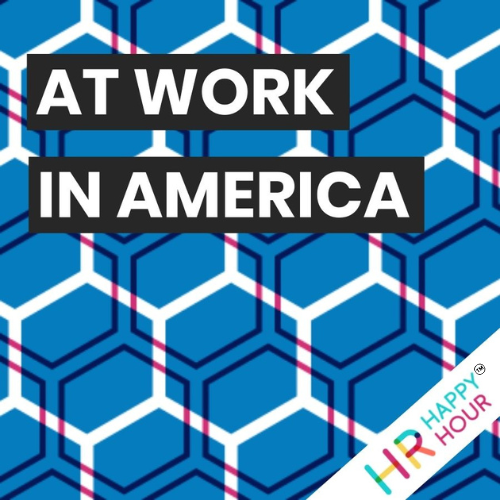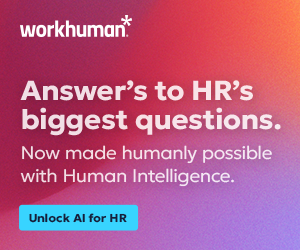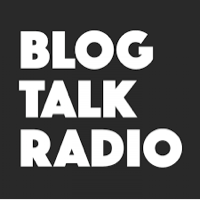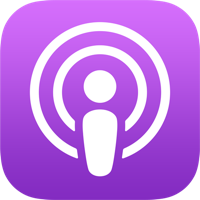Learning and Recruiting Trends for 2024 from LinkedIn
Hosted by

Steve Boese
Co-Founder and Chief Data Officer of H3 HR Advisors and Program Chair, HR Technology Conference

Trish Steed
Co- Founder and Chief Strategy Officer, H3 HR Advisors
About this episode
Learning and Recruiting Trends for 2024 from LinkedIn
Hosts: Steve Boese & Trish Steed
Guest: Liam Walsh, Senior Director of Talent Strategic Initiatives, LinkedIn
Today, we met with Liam Walsh of LinkedIn to talk about how the landscape of recruiting and learning is changing. In this episode, we explore the evolution of skills-based hiring, emphasizing the crucial role of agility in today’s workplace. We touch on the current job market, highlighting the importance of career development and transferable skills to navigate these shifts successfully. Additionally, we discuss the integration of soft skills into recruiting processes, augmented by AI tools, to provide valuable insights. Learn more here: 2024 Future of Recruiting Report & 2024 Workplace Learning Report
Thank you for joining the show today! Remember to subscribe wherever you get your podcasts!
This episode of At Work in America is sponsored by Paychex, one of the leading providers of HR, payroll, retirement, and insurance solutions for businesses of all sizes. 2024 is going to be an amazing year for HR technologies. AI and automation can finally offer significant time-savings on daily HR management and transform hiring, reporting, and managing your workforce. We’ve worked together with Paychex and 9 of our HR insider friends to assemble a comprehensive guide to HR tech in 2024. With so many new technologies hitting the market and what’s quickly becoming an AI- obsessed work culture, it can be hard to find a starting point. This toolkit is the first step in cutting through all that noise. Grab your free copy today at paychex.com/awia.
Transcript follows:
Announcer 0:00
Welcome to At Work in America, sponsored by Paychex. At Work in America digs in behind the headlines and trends to the stories of real people making a difference in the world of work. And now here are your hosts, Steve Boese and Trish Steed.
Steve 0:27
Hi, everyone, welcome to At Work in America. My name is Steve Boese. I’m joined by Trish, how are you?
Trish 0:33
I’m good. How are you today?
Steve 0:35
I am. Well, thank you.
Trish 0:38
I was gonna mention we’ve got an exciting show coming up. But I have a new background right now.
Steve 0:44
What’s going on there.
Trish 0:47
I’ll even tip this up a little bit. I want to show it off. So this has been in storage for about five years. And it’s a huge it’s an actual oil painting. And you were there when I bought it. You probably don’t remember it. But we went to Hong Kong for HR tech China. And I think it was the was the first one in July. I bought this on my trip. And it’s enormous. I actually I’ve tried to get it framed and it’s gonna have to like have some custom framing or so it’s an odd size. But anyway, I just thought I’d show that off.
Steve 1:21
We have a great story we’ll have to retell someday about the fairy boat from Zhuhai to Hong Kong. Yeah, it was a great group of folks on that trip, as I recall, as well, some other friends of ours were there. And it was a great time and a great story. Speaking of the Far East Trish, I’m going back to Singapore this year, I haven’t talked about it, I think at all on this show. But I’m going to be going to HR tech Fest in Singapore in a couple of months. And we’ll be presenting there So more to come on that. But I’m excited to, to mention that I have not been over in that part of the world since the pandemic, right, which naturally shut down our China event and it kind of really made traveling over there kind of silly for a while. And now things are back open, of course. And I’ll be going over to Singapore in a couple months, which is fun.
Trish 2:13
I think that’s exciting. And I think around that time, I’m going to be going to HR Tech Europe, which is also another new event. I mean, definitely, I’m glad that the world is opening back up, right? Because it’s so important to learn from other business professionals, HR leaders, recruiters from all over the world and hear their perspectives of how some of these technologies are helping them. So will you and I’ll have to talk offline, maybe we we have some little series that we do on each of those trips, right?
Steve 2:46
Yeah, we need to do some sort of like, yeah, HR Happy Hour network global series or something in the springtime from the various locations we’ll be at. So that’s coming up. That’s really exciting. Trish was coming up today as a great show with Liam Walsh from LinkedIn. And we’re going to dive deeply into a couple of new reports LinkedIn is released one on recruiting, and one on learning heavy conversation around skills. So if you’re in an organization that’s thinking about doing the skills based hiring thing, or transitioning to a more skills focused talent management set of strategies, you’re gonna want to listen to this conversation, which is a really, really good one.
Steve 3:24
So before we get to Liam, though, we have to thank our friends, of course, Paychex. Trish, this episode of At Work in America is sponsored by Paychex, one of the leading providers of HR, payroll, retirement and insurance solutions for businesses of all sizes. Trish, I actually want you to talk a little bit about this because we’ve got a new kind of read for our friends at Paychex because we’re promoting a new report, or a new asset that they’ve made available in 2024. We expect it’s gonna be a big year for HR tech, with all kinds of new tools. But lots of folks listening are probably thinking, Where do I even get started on thinking about buying a new tech or upgrading my HR tech, so maybe you could talk just a little bit about what we what you really led but we all did in conjunction with our friends at Paychex.
Trish 4:09
I have to tell you, I would not normally say this about something that that we work on. I’m pretty like, you know, good about not bragging. But this is got to be the best ebook I’ve ever been part of it. It is a great group of influencers from all across the country who are coming at it from every different angle. We have analysts, we have practitioners, we have Gen Z represented, we’ve got, you know, all all the different categories covered. All ages are represented in this ebook, but it’s really a good group of people who’ve come together and talking about how technology can benefit you in the workforce today. And so there’s a lot of data in there, but our friends at Paychex were the ones that really just pulled all of those thoughts together. And it’s beautiful and so I’m sincerely proud of it.
Steve 5:02
This report is full of insights to help you assess, shop for, and onboard new HR tech software in your organization, what’s hitting the market, what you need to be thinking about great set of resources, great set of people and a great looking report, as well. So you want to learn more about this report. And I encourage everybody to do it. Please get your free copy today at paychex.com/awia.
Steve 5:38
So thanks to them. Trish, thanks to you for leading that effort on all all of our behalf. And encourage folks check that out. All right, let’s welcome. Let’s get Liam on board here and talk about skills, talk about LinkedIn data, and hope everybody enjoys the conversation. We are excited today to welcome our guest. He’s Liam Walsh. He’s the Senior Director of Talent Strategic Initiatives at LinkedIn. In his role, he leads teams that focus on enhancing learning and skilling increasing organizational agility, expanding career opportunities for LinkedIn employees. And the common thread through his many roles over 12 years at LinkedIn has been scaling talent systems and processes to advance maturity from startup to a large enterprise. In his current role, he leads the transformation of talent processes centered on skills. Liam, thanks so much for joining us. Welcome to the show.
Liam Walsh 6:36
Thank you so much, Steve. Thank you for having me. I’m excited to chat with you guys today.
Steve 6:41
It’s our pleasure. LinkedIn is such an amazing resource for everybody in the business in the space we’re in, but not just for us, right. It’s for, for all its members. But before we start diving into some of the some of the data, some of the research from the new reports, right, talking about skills, talking about AI, let’s just learn a little bit more about it. And you mentioned in your bio, you, you’ve been at LinkedIn for 12 years, love to learn more about you and what you’re doing at LinkedIn.
Liam Walsh 7:10
Yeah, totally agree, I feel very fortunate to do the work I do at LinkedIn. LinkedIn is a very special place to do talent to work and talent. That’s the business we’re in the leaders I work with they have a perspective, which is usually really good. I get to spend a lot of time with our customers learning how they felt that type of challenges that we’re solving and get your back as per their needs. As you said, Steve, I spent a good chunk of my career at LinkedIn, it’s been nearly 13 years. And I came up through recruiting and over that over much of that time, my current role I fit in our talent leadership team. So recently, we brought together or talent acquisition and talent development teams. And really, we did that because we saw an opportunity to serve the business in a new way, by being end to end talent advisors. I’m reading more and more and started see that hiring decisions development decisions, they don’t exist in a vacuum, we need to understand how skills are shifting the availability of skills, both internally and externally, and then be in a position toward the advice advances on how to get the skills in the right place. So I lead a lot of that work today, I lead the teams that enable that kind of end to end on strategy. So that’s great about but and a lot of the folks who lead our system strategy or product owners, delivering connected technology experiences for employees, I get to lead our skill strategy. And I also work super closely with our product teams, which is a fun and unique part of my role.
Trish 8:39
You know, we’re so excited to have you on obviously, over the last especially five years, there’s been such a focus on skills, even more than just a job description, right? It’s been a real shift in evolution in the way that recruiters and hiring managers work in terms of the way they even look at a candidate so I know we’re gonna dive in again on some of the data but before that I would love to just hear I mean, you’ve been at LinkedIn is a 12 years right so you’ve seen probably started when when it wasn’t as skills focus, like how has that evolution looked from your perspective, or LinkedIn perspective more holistically in the last few years with you know, just having a bigger focus right there.
Liam Walsh 9:19
It has been really interesting to see this evolution towards skills and even like even listen to your guys podcast and be that in the industry feels like everybody’s talking about it and and has been for a little while and I think it is one of the things when that happens you really want to understand what’s what’s the real real in this and you know, what’s just some of the noise and I think we’ve certainly been on that journey ourselves. I think we already started talking about skills in a serious way, like three to four years ago. We started with a lot of experimentation, a lot of pilots. So people at that point, we talked a little bit about skills. First, I think we think about that a little bit more broadly now and talk about that being skill based. But that’s a really healthy place for us to start. Just to understand, you know, as we look at hiring as we look at development, as we look at performance, how my skills integrate into each of those processes.
Trish 10:30
I’m glad you mentioned that, because I think too, when I’m thinking about you mentioned three to four years, yeah, it was probably it was right, just before COVID, when I was starting to hear like you’d be out on the speaking circuit, right, and people were just kind of talking about it. But then organizations take several years before things start to really take hold. And so yeah, I would imagine that a lot of the listeners, it’s still very new to them, they might not really be skills focused yet. And so that’s why we’re very excited to have you on because I think you are not just a thought leader yourself, but you’re in a company where you’re actually putting those skills and that focus into action. Right. And that’s very different than what many organizations have done yet. So I guess for people listening, if you’re not currently taking this sort of skills based approach, you know, you’re not too far behind. Right, this is still pretty cutting edge is we’re getting organizations to understand how important it can change and enhance your business model.
Liam Walsh 11:26
Totally, I think it’s really just emerging that I think we’re now starting to see some best practices developed, which is really exciting. I think, you know, my belief around what we see really saw this acceleration over the past few years, it’s really about driving agility. I think we all as talent leaders need to to respond a lot over the last few years. And it didn’t always feel good. And I think there is a collective realization that at least with the folks I speak with, that that pace of change will only intensify with AI, we expect that the skills for jobs are projected change by 68% by 2030, which is only five years away. And so we need to prepare. So rather than kind of, you know, expecting fitter, and the crystal ball I think is how leaders, we really need to take our faith into our own hands and figure out how we can drive more agility in our processes, more resilience in our processes. So it’s more sustainable practices, picking up the right skills.
Steve 12:22
Liam, one of the things I noticed in and there’s a couple of reports, we’re going to reference throughout the conversation today, there are a couple of new reports LinkedIn is releasing in early March ones on recruiting the future of recruiting 2024. And there’s another learning report, the Workplace Learning report of 2024. And we’ll link out to those reports and encourage folks to download them and check them out. But one of the things we see certainly in this report, and another other things we’ve read another research is that it’s slow. As Trish mentioned, it’s slow for organizations to adopt new, new ways of thinking around talent, and it’s easy to go back into the default. And in this specific example, I’m thinking about formal degree requirements that go into job descriptions that are used to sort of shortlist candidates or sort of disqualify candidates, perhaps, as you guys have thought about skills, both internally and as you’ve worked with organizations, as LinkedIn kind of gets fees, what’s going on, right with hiring trends and skills trends? What are what are some of the ways organizations can kind of maybe take those good intentions and actually make them a little bit more actionable, and perhaps even convince maybe skeptical leaders or skeptical hiring managers that that changing and approach to say hiring and development is warranted and can be beneficial to the organization?
Liam Walsh 13:46
Yeah, it’s a great question. There’s some really simple steps that we’ve taken. And we’ve seen a lot of people take, which is like simply removed the possible degree requirements from job descriptions. We certainly seen a lot of that on the LinkedIn platform. So we saw over the course of 2019 to 2022, and 36% increase in the number of roles posted with that job descriptions. I think we’re starting to see those simple steps be taken. There’s also a mindset shift, which you’re getting to Steve of like, how do we get at the business and leaders within the business to think differently? And I think, you know, for me, in my experience, we’ve really found just like discussing the talent pool, you know, I think over the past year, year and a half, we’ve been really focused on where can we find bleeding edge AI, skills, like a lot of organizations and the fact of in many ways they don’t exist. So we’re really looking at what are the transferable skills within our organization where people who are you know, 70% there, 80% there, and then how can we bridge to 100% or development programs? And that’s been a really successful way, but just shifting the mindset.
Trish 14:56
Yeah, I would imagine too. I mean, I think it seems like the reports that you all are producing are also a tool then for whether you’re the head of HR or the head of, you know, talent acquisition or whatever, you know, you have the data to back up maybe some of the things you’re recommending to the organization, right, where like, I’m thinking back when I was a recruiter, right, we just, we were barely on the internet. So if you’re quite honest, and so it was like, it was difficult to go to my CEO, and convince him what we needed to do, because I didn’t always have sort of these resources and reports and data. And so I do think that’s something too, that I think that’s why it’s important to follow LinkedIn, because you’re more able to make that business case, when you are wanting to make sort of tweaks to the way that you’re handling your, your sourcing your recruiting and and just your overall approach to the employee lifecycle, I think, I don’t know, from your customers at all, that that’s really what helps them make that case.
Liam Walsh 16:01
And I think like we, you know, I, I spent a good amount of time talking to our customers to do work similar to what I do. Building the business case, it’s often where a lot of people spend a lot of time, you know, when we talk about skills, or we talked about, you know, over the last year, it’s flexible work policies, or, you know, the changes keep coming, the problems remain the same. And I think that is how do we influence our leaders, to really connect them to what we’re seeing externally, and then how we need to shape our top strategies internally to meet that. And I think one of the things, one of the reasons that we do publish these reports is to give people those nuggets, that could be just one data point to bring to a conversation that really just changes, you know, how a leader might be thinking about a specific problem. And for me, that’s super valuable. And I know a lot of of our customers.
Steve 16:49
Yeah, yeah, the expansion of the talent pool. Liam, you mentioned a second ago, which I found pretty a compelling example, in one in the recruiting report, I think it was want to discuss flexibility, right. And in a world right now, in early 2024, as we record this, more organizations, leaders and organizations are trying to bring more people back into in person work and get off his buildings, backfield, again, at cetera, et cetera. And that’s a whole nother debate on how much or little that makes sense for an organization. But what’s what’s interesting in the report, it talks specifically around recruiters kind of leading the kind of the tip of the spear, if you will, in discussing flexibility where they could go to leadership and go to their hiring teams and say, Look, if we embrace a more flexible approach to work, our talent pool could explode, right? It can get go from a small circle of people who are able and willing to come into this location for five days a week to a wider pool that might be more flexible, or even fully remote, obviously, that could get even wider still. And the importance of actually bringing that data to the decision making process, which is it was a it’s a simple kind of concept. But it was illustrated, I think, pretty powerfully in the report. And and I gotta believe that’s something that can also work in the skills conversation, too.
Liam Walsh 18:12
Absolutely. And yeah, I mean, when it comes to the flex work policies, like we see this imbalance where we see seekers are very much seeking those remote job opportunities, that traffic continues to grow. Those, those jobs get many, many more applicants than, you know, the in office or ultra hybrid grows in but we continue to see more and more of those roles get posted. So we’re seeing a decrease in remote jobs on students. And I think, you know, I’ve told leader if it is our job to educate on the impact on the talent pool that we’re hiring for.
Trish 18:45
Yeah. The other thing that you sort of touched on a minute ago, with regard to talent pool was also you called it sort of growing from the inside, right, and transferable skills. And we hear a lot about upskilling. But I liked this idea of the transferable skills, could you maybe spend a minute and talk about why it’s important, not just hire from the outside, right and be changing kind of location or hybrid working requirements and so forth are degree requirements, but also to really be looking at our existing talent pool within our organizations in looking at it in a really different way.
Liam Walsh 19:23
So at a time, generative AI will be so disruptive and on that scale. But we’re also seeing a time when tech majors are increasing year on year, the humanities enrollments are getting lower and lower every year. So I think a lot of that is going to fall on us as our leader for how do we upskill the workforce that we need in a moment in time knowing how quickly it is shifting? And I think we do that through our skills based strategy. So one of the things we’ve done in in moving forward with our skills based work at LinkedIn is we’ve really You’ve started to see skills as the common thread that threads all of our or talent practices. So when we think about having a consistent language that drives across development across hiring, that really allows us to view the skills that we have not just the people, because people can bring many skills that they’ve learned on the job that they fit in LinkedIn or bringing other experiences. And we’re really starting to see that whole set of experiences and skills, because it’s an understanding of what are the skills that we have in our workforce today? What are the adjacent skills, and, you know, Will, I believe will still continue to hire engineers, but the skills we might need from those engineers will be communication and collaboration. And I think that’s where we will really be able to support what the business needs as a team.
Trish 20:45
I’m really excited to that it’s making this shift. And I’ll tell you why. Liam, because I think you know, so I’m in my 50s. And it’s very much not brought up right, and a skills based approach, more traditional approach. And what becomes difficult is I’m noticing, like, I have always focused more on skills. And so I’ve changed from being a recruiter to an HR leader, and then from that into, you know, working in technology and being an analyst. So it is about the viewing my transferable skills, right to different positions. The question I get the most, and the people that are struggling the most are tend to be those people in Gen X, who think they have a degree in this thing. And that’s the only job they can do. Right? So if they’re an accountant, they think they can only get other accounting jobs if they’re unhappy. And I’m like, no, no, no, you have so many skills as an accountant. Right. So there’s this ultimately thing, it’s going to be helpful. Any advice on whether you’re a person listening to this, and you just don’t see how your own skills are transferable? Or, like, What are you talking to clients about? Maybe if, if they’re not on board quite yet, with that idea that it’s actually really beneficial. It’s just feel like they’re still challenged to get some people to break out of that, that mindset.
Liam Walsh 22:05
It’s a great point, Trish, I think, you know, from an organizational perspective, I think we see through the reports that we published this week, internal mobility and career development career pop in are just huge priority for top leaders right now. And I think, you know, there’s the mechanics of how we do that, right? Like, what’s the learning we provide, as we articulate different career paths? How can people visualize it, but it’s also a mindset shift? For individuals of you know, how do we how do we start to think differently about our careers, we’ve talked for a few years about the idea of a portfolio career, and I think we’re really starting to see that become much more real and in how quickly the environment is continuing to change. One thing that we consistently find in our data every year is that the people skills are the most durable skills. So you know, definitely skills like technology, what we would have called, you know, previously harder skills, they can, you know, change really quickly. But the most in demand skills on the LinkedIn platform continue to be communication, adaptability, so really human skills.
Steve 23:15
Yeah, we’ve been there. I made a note here before the show in the in the recruiting report that we were talking about earlier, the two top soft skills that were identified for recruiters specifically. First was communication, as he said, and the second was relationship building. And I can’t think is recruiting in many ways. It’s a sales job, right? It’s, to some extent, are marketing and sales job. And I couldn’t think of an a lease right now, from my nascent experience with the various AI tools that are available to us now, relationship building does not seem yet to be a strength of any of these AI tools. Right, and probably, perhaps, will never be I don’t know. So I think the data certainly underscores your point about those kinds of skills are going to be in demand, the LinkedIn data shows that to and are going to be really enduring at least for quite some time. Until till the technology becomes so advanced, we can’t differentiate it from from people, which probably will never happen. So I think those are great points.
Liam Walsh 24:16
I certainly hope not. I think, you know, it’s funny, I’ve spent nearly all of my career in recruiting. And it has always been the case that the greatest recruiters I’ve worked with are, they have really great human skills. I think that’s always what has been, what is defined being a great recruiter. And I think this just amplifies it, it makes that more true than ever. Yeah.
Steve 24:36
The last thing I think I’d want to just mention here and talk to you a little bit about because I gleen this from the report, and I’ll just toss it out there. I’ll read it really quickly. It was a quote in the workplace learning report from one of the one of the experts that report cited and as a woman named Geraldine Murphy from Heineken. And here’s the quote, I thought this was excellent. She says l&d professionals must help employees prioritize three, six skills for the job people do now. skills for the job they want to do tomorrow. And sort of what we were talking about here, skills that will serve them for the rest of their career and their life. Right. I’m paraphrasing a little bit. I think that was a great quote, I wrote it down. And I was so like, oh, yeah, that’s perfect. I’d love for you to talk a little bit about just that internal development piece that Reese, whether it’s upskilling reskilling, and sometimes debating over the difference in those terms is, you know, just silly that we’re doing it. But just a little bit about that, and then how that feeds into internal mobility. Because other than AI, I suppose I feel like I’ve talked more with people about talent, mobility and internal mobility more than almost any other topic in the last few years.
Liam Walsh 25:52
It’s a great quote, and thank you for pulling that I had seen only about a third of companies that we’ve surveyed have internal mobility programs, and only one in five employees believe that they can make an internal move. So that’s obviously a problem when it’s not later, it’s we’re really thinking about how do we move folks across the organization? How do we get people to what the business needs? I think the challenge or for myself, where I taught leaders in similar roles is how we can find that alignment between the business goals that we have the learning that we provide for our employees, and how they can tailor that to their individual career motivations, right? It needs to not only be the skills that are needed tomorrow, but the skills that I desire to build to do the type of work that will be needed in the future. So that’s why we’re seeing such one of the data points in the report with the career development had jumped in priority for talent leaders from I think, number nine to something like three or four this year. And I think that that is true to what I’m hearing and seeing, you know, people are gonna be thinking about this, how we can find those intersection points between you know, what is it that the business needs? And how do we align? Looking at, like, we talked about looking at the transferable skills, how do we align that with, you know, the right development programs to get people from 70 or 80%, to, you know, closer to 90 95%?
Trish 27:14
it’s such a great point that you make, too, because I’m just thinking back to when I was in recruiting, or then even just leading a team of recruiters. It’s, it makes, I feel like when we have the skills focused, and we’re talking about how AI can help reinforce and help enable recruiters to work in a very different enhanced way. I feel like all of those things together, and now you’re talking about, like, sort of the l&d link, before I felt like these were very disparate areas of the human experience at work. And I was just what I’m hearing you in this conversation, it’s like you’re able to when you talk skills, it ties it all together, right? It’s just all of like, the lnd piece makes perfect sense. When you’re skills focused, right, if you’re role focused, it becomes much more of a difficult conversation, I think. So I don’t know, I’m just really excited with all the work that you all are doing.
Steve 28:10
There’s a lot of great insight here, lots of great data and insights in these two reports that I mentioned at the top of the show, we’ll link to them in the show notes. Again, it’s the LinkedIn future of recruiting 2024 report, and the Workplace Learning report, 2024 report, which I’d encourage everybody to read, we got a sneak peek, I’m not gonna lie, we got a little sneak peek before they came out to be able to get ready for this show. But fantastic stuff. And I recommend folks to check those out. Liam Walsh, great to see you. Great to meet you. And thank you for taking some time out of your busy schedule to join us today. I appreciate it.
Liam Walsh 28:42
Of course, so happy to spend this time with you. I appreciate being a guest. I’ve heard the podcast many times. And I always take something away from it. So appreciate that work you guys are doing and it’s so nice to meet you today.
Steve 28:53
Great to see you. All right, Liam Walsh from LinkedIn, we’ll link to those reports as well. Just great, great stuff, man cutting edge stuff. And I love the data too. And I love that, you know, LinkedIn mentioned a billion members, so much data around people and skills and movement and what you know, just I love it. So it’s great to be able to sink into that a little bit. And I as I said the two reports really dive into it as well. So great, great stuff.
Trish 29:18
Yeah, I can tell you and Liam, these reports, if I were still in HR, I would be using them. So I’ve done this before, when I when I was still a practitioner, I would take those LinkedIn reports and actually hold Lunch and Learns with my team, my whole team, we dive in, and then we would have to like present out to each other some of the findings from the report. So for a lot of HR professionals, a lot of talent professionals, you don’t get a lot of training from your organizations. And if you’re in that situation, use these reports in that way. Make it your own training, because especially when you got one coming out about learning and development and one on you know, talent acquisition. It’s like two major parts of our jobs. So I don’t know, it’s such a great idea.
Liam Walsh 30:02
We all pick up something different, right? So I mean, just hearing different perspectives.
Trish 30:06
Everybody reads it and you come together and have to present to each other. And yeah, I always learned something as the leader even. So it’s it’s just such a great way to use, again, reports we just didn’t have 20 years ago, quite honestly, you know, so take advantage of that as a training opportunity, I would say. And thank you, Liam, your answers were better than I could have ever expected. I really appreciate that.
Steve 30:28
Thank you. All right. Great stuff. All right. So thanks again to Liam. Thanks again to our friends at Paychex of course for all their help and support. A reminder all the show archives at HRHappyHour.net And for our guest Liam Walsh, for Trish Steed, my name is Steve Boese. We will see you next time and bye for now.
Transcribed by https://otter.ai
Talk to us
If you want to know more about any aspect of HR Happy Hour Media Network, or if you want to find out more about a show topic, then get in touch.










